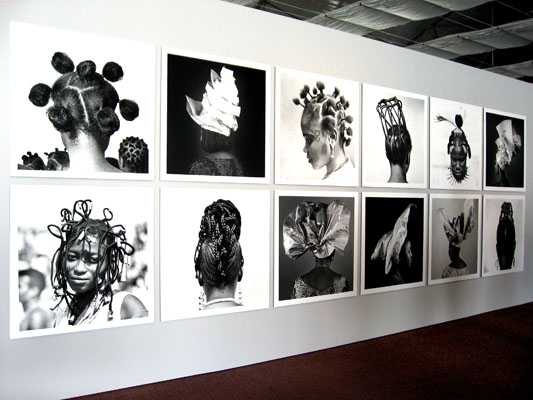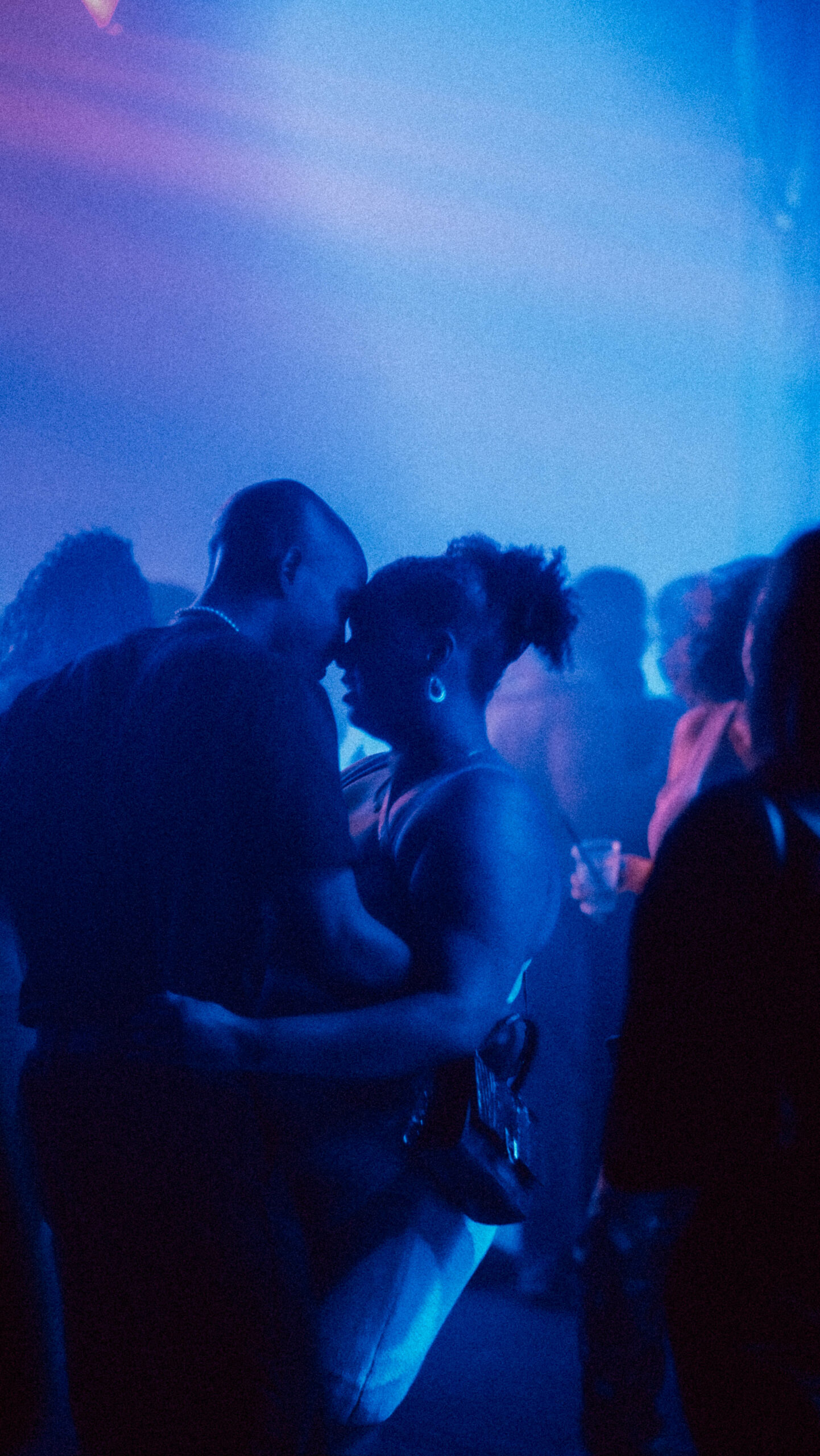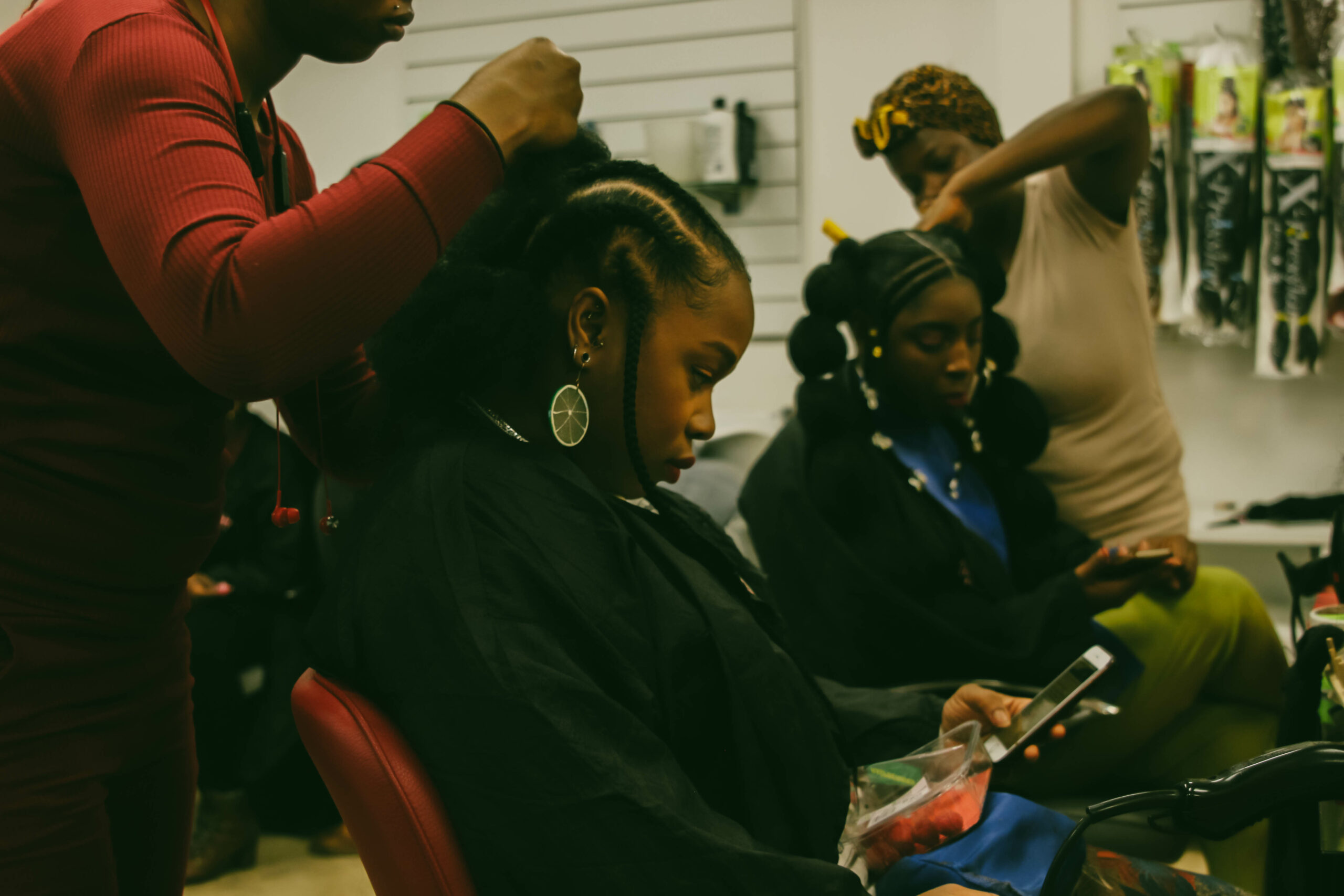
How J.D. ‘Okhai Ojeikere’s photography showed me the beauty in black hair
Leyla Reynolds
31 Oct 2016
“I always wanted to record moments of beauty, moments of knowledge.” – J.D. ‘Okhai Ojeikere
When I was very young I learned that my hair was “different”. It was different to have corkscrews as opposed to straight lines, or to talk of having my hair out instead of down, despite curly hair type being a near universal feature for those of black or black-mixed origins. I learned that it was different when, in a year seven chemistry lesson, I was told by a boy that my hair was like pubes and that my eyebrows, thick and black as they were (not trendy at all in 2007), looked as such too. At fifteen, a blonde haired girl would exclaim that my hair was so big, so curly, that she should stuff pillows with it.
“Is it real?” was the repeated refrain from peers, family friends and even teachers.
“Can I touch it?”
“What do you do to get it curly?”
In year nine, my friends and I would laugh at the comb-over hairstyles ubiquitous on the popular kids and discuss how we would go about emulating them for a laugh. “But how would you do that?” one of the girls sniggered. Often, strangers would ask me if I hated my hair. It would be inflected as an innocent question, expectant of my affirmation, but in reality I was being taught the basic principles of Otherness – experiencing an induction into a future of unwanted commentary on my appearance accompanied by an invasive hair squeeze or two.
At our multicultural primary school in the heart of London the black and minority ethnic groups made up the majority. Of a class of 28, four were white, and only one of those four had parents born inside the UK. In this highly diverse, high performing, immigrant-powered (though still segregated to a point) school, my friends and I would regularly spend break times playing pretend. We’d swap our names for Jane, Lilly, Mary, Amy and Tara. I remember going home and insisting that from that day on I would be called Michelle (a notion that garnered little airtime from my mother). At eight and nine, we had already coupled these standardly English names with a prettiness and femininity that we felt we were not in possession of. Amina and Leteisha, Mala, Zelie, Rezwana and myself, a Leyla, paled in the shadow of Hannah and Holly. Those names were lumpy and cumbersome outside of our ethnically-scattered bubble and, somehow, we already knew it.
Where had we learnt that our names, a reflection of the diversity of our make-up, weren’t good enough? Had it originated in questions, those questions perceived as harmlessly assumptive, that would also instil in us a desire to “tame” our hair?
In the same quiet way that our classmates and teachers asked “questions” because they were curious, so too does the media. With every advert assuring magazine cover featuring yet another white, cisgender, European hair textured, thin and able-bodied woman there is an unsaid question. When dreadlocks are sneered at on Rihanna but revered for their rebuttal of beauty norms on Kylie’s and Miley’s, young girls of colour are posed an unsaid question: where am I in all of this? Why are people like me unworthy of the same adulation that justifies the omnipresence of one kind of a woman?
The late J.D. ‘Okhai Ojeikere’s work celebrated the artistry of those hairstyles afforded little exposure in the mainstream. The Nigerian photographer, through immaculately shot black and white portraits of Nigerian “headgear” managed to elevate hair styling from decoration to a fine art. It zeroed in on the sculptural and abstracted qualities of the hair, showcasing the varied, intricate and skilled nature of black hair as well as the labour and tradition surrounding it. The images are unapologetically distinctive. Cornrows, braids and knots protrude from all angles, in all directions, with a braveness that this article might suggest would have been suppressed. Okhai’s works are artworks, but they are only a small sampling of the tradition of styling natural black hair that is found across the globe in the many corners of the African diaspora.
While it cannot be denied that black hair is a battleground, it being a symbol of power and control since colonialism, Okhai’s illustrations represent an agency that is much aligned to our current times. There is a move right now towards celebrating natural black hair. When I’m in London, I look around on the tube and am elated to see the wealth of braids, afros and twists, and whilst it still falls to every individual to choose (relaxers and hair straightening have a long and complicated history within the black community) hopefully one day such will be the swell of pride in natural hair that we’ll see 20 of the styles found in Okhai’s documentations on every British street and double that in every women’s magazine.
Okhai’s affirmations demonstrate the sharp contrast between those depicted in daily media and the diverse reality of life. They make essential the need for a media that will present an honest reflection of the true diversity of our society, one that is unafraid of celebrating both our presence and unashamed variety.
“Hairstyles are an art form,” Okhai once said. “Without art, life would be frozen”
It is true that without depictions of our art the consequence is the continued prevalence of a question mark for girls of colour everywhere.









